- History of Smith-Corona Typewriters: From Shotguns to Spell Check - December 27, 2021
- Vintage Navigational Tools (And How They’re Useful Today) - December 25, 2021
- A Guide to Prohibition Era Clothing & Styles - December 23, 2021
Nothing seems as innocent as a family gathering around the table to play their favorite game.
Yet, many childhood classics rose from dark tales or suspicious circumstances.
So, if you want to find out which game was inspired by polio and what fad was created by a fervent member of the Aryan Nations, read on to see the grim stories behind your favorite childhood games.
1. Monopoly Was Stolen From It’s Creator
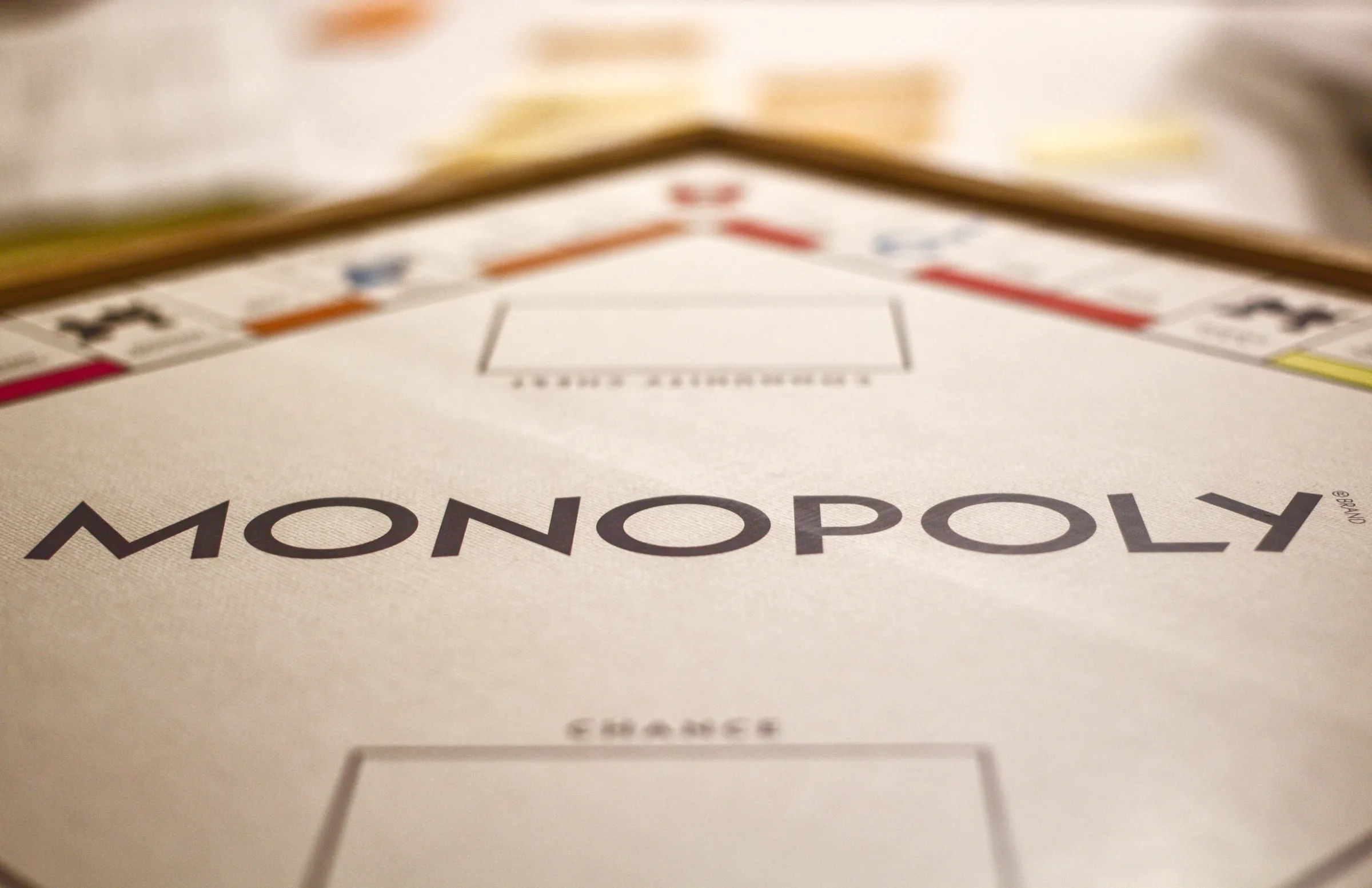
You’re probably familiar with Monopoly related rage, since it’s doubtful there’s ever been a game completed without some kind of family fight.
But before Monopoly fever swept the nation, the game began with conflict.
Now, you may have heard the story of a man named Charles Darrow, who invented the game during the Great Depression and got rich in a desperate time.
But like most corporate origin stories, it’s not true.
Two decades before the depression, Lizzie Magie invented the first original version of Monopoly — Landlord’s Game, according to an interview from NPR with author Mary Pilon, who literally wrote the book on Monopoly.
The Landlord’s Game wasn’t a contest about who could leave the most cryptic voicemails and harass you about separating your recycling at all hours of the night.
No, the Landlord’s Game wanted to show the danger of consolidating wealth and creating monopolies.
The board game was very popular in Quaker communities.
The Atlantic City Quakers loved it so much, they renamed all the streets in the game after their fine city. One day, a Quaker gave The Landlord’s Game as a gift to a friend — Charles Darrow.
Darrow didn’t work in his basement, desperately trying to think of a way to feed his family. He stole a fully formed game from a woman and sold it to the Parker Brothers. Somehow, that origin tale isn’t quite as heartwarming.
The only reason we know the real story of Lizzie Magie today is because of a lawsuit.
In the ‘70s, Ralph Anspach created Anti-Monopoly, a game to counteract the greedy morals of the Parker Brothers favorite.
But the Parker Bros weren’t too pleased and sued Anspach for trademark and copyright infringement.
Unfortunately for the Parker Bros, Anspach uncovered the story of Lizzie Magie and revealed that the original game was completely stolen. Anspach won in court and Magie got some of the acclaim she deserved.
Still, the main moral of the story is that no one should play Monopoly.
2. Candy Land Was Made To Cheer Up Kids With Polio
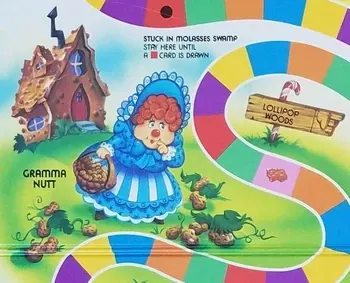
Oh, Candy Land! The sweet, innocent game where you aimlessly travel across a board for no real reason.
But Princess Lolly looked cool and Gramma Nutt was weird, so it was all a lot of fun. Who’d imagine it was all inspired by polio?
In 1948, retired school teacher Eleanor Abbott contracted polio and had to spend months recovering in a San Diego ward.
To pass the time and try to amuse the many polio stricken children, she came up with the idea of Candy Land, according to food historian Samira Kawash.
It makes sense that there’s not a lot of fright and conflict in the game when you know it was made mostly to distract children from their iron lungs.
The kids went nuts for Candyland, so Abbott pitched the game to Milton Bradley. They loved the idea and by 1949, Candyland hit the shelves and it never left.
Though the board has changed a few times over the years, it’s remained incredibly popular.
In 2010, they changed the board for a more modern look. Finally, Queen Frostine is the skinny girl with a come hither stare that we’ve always wanted.
3. The Inventor of Operation Couldn’t Afford An Operation
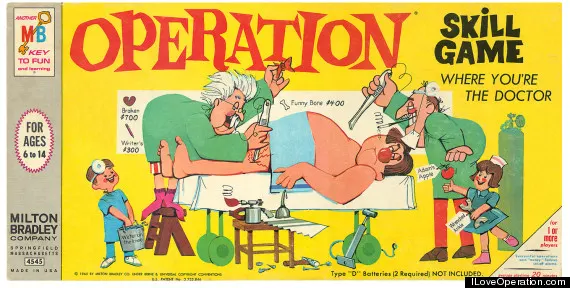
Operation, the game that encourages kids to pluck organs from a human clown, has made at least $40 million over the years, according to the creator of the game John Spinello in an interview with Huffington Post.
But Spinello isn’t rolling around in cash from his medical game — he sold the prototype for only $500.
Spinello made the Operation prototype for a college class and pitched it as a game to Marvin Glass, the man behind Lite Brite and fake vomit.
Glass bought the idea for $500 and promised Spinello a job after college. Spinello never got a job offer and had to call Glass more than once to get his meager earnings.
Still, Spinello was happy the game was a success and didn’t wallow over lost royalties. Though his life became rather ironic when he got back in the spotlight for a different operation.
In October 2014, Spinello needed a pricy oral surgery that he couldn’t afford. His friends started a crowdfunding page and Spinello offered to sell the Operation prototype to fund his real-life operation.
Luckily, they raised over $32,000 and Hasbro bought the prototype for an undisclosed amount, according to Huffington Post.
Spinello got the surgery, recovered well, and still isn’t making royalties from Operation.
4. The Original Game of Life Ended in Suicide
The Game of Life involves going to school, getting jobs, and hoping it all ends quickly. It hits a little close to home.
But the original version was even darker.
This game has been around since 1860 and it was Milton Bradley’s first success.
Titled ‘The Checkered Game of Life’, the public interest in this dour game spurred Bradley to become one of the biggest names in board games.
In 1861, he made a travel version of the game so that Civil War soldiers could take it with them and be reminded of how boring normal life can be.
The Checkered Game of Life is less colorful than the version we have today and there’s nary a spinning wheel to be found.
The game resembled a checkerboard with pointing hands indicating the direction you’d travel.
The goal was to lead a good and moral life and end at Happy Old Age. But if you weren’t careful, you could end up with Suicide.
Yes, Poverty, Idle, Ruin, Disgrace, and Suicide were all options for this rip roaring game.
How would the soldiers have lived without a game that reminded them of the option of killing themselves?
On the lighter side, the game also had a “Fat Office” square. It’s not clear what that means, but at least it’s a funny thing to read as your game piece goes on a journey to hang itself.
5. Was Snakes and Ladders a Product of Whitewashing?
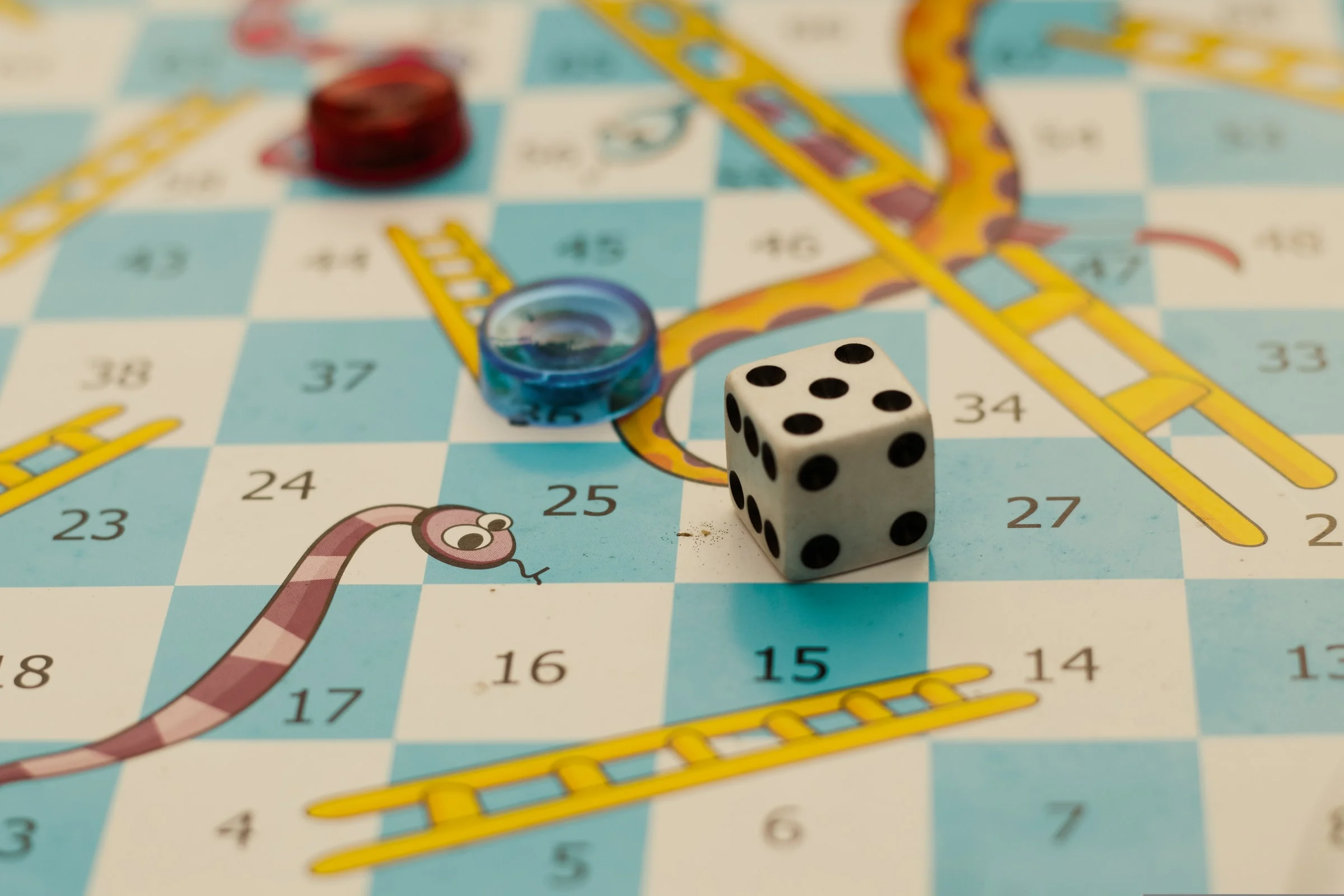
Snakes and Ladders is based on an ancient game called Mokshapat or Moksha Patamu, from India.
Though it’s origin isn’t clear, it was played in the country for thousands of years. If you landed on a snake, you’d travel down to terrible demons, while every time you climbed a ladder you got closer to one of the gods.
When Britain colonized India, they grew fond of Moksha Patamu and decided to give it an Anglo makeover. The gods and demons of the Indian culture were gone and replaced Christian ideals.
The game still had the idea of having the snakes and ladders represent opposing ends of morality, but now the characters had white faces.
Snakes and Ladders was a very popular game since its British debut in 1892. Some subsequent boxes showed pictures of Indian children as snake charmers while the caucasian children looked on in amazement.
It’s not surprising that turn of the century Britain didn’t embrace the Indian culture of the game, but it’s a bit sad that its Indian origins are still barely known.
6. The Sea Monkeys Were in the Aryan Nations
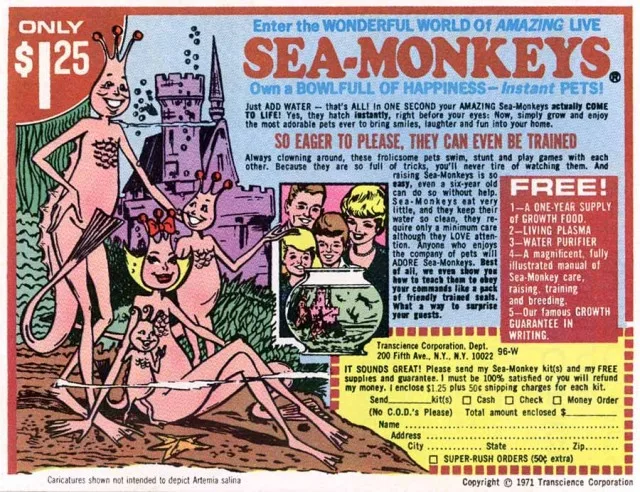
If it was implied that the maker of Sea Monkeys was a bit sleazy, it probably wouldn’t be that surprising.
Sea Monkeys are basically a huge con, since brine shrimp look nothing like colorful characters promised on the package. But you might not assume that the creator sold weapons to the Aryan Nations.
Harold von Braunhut was a maker of many garbage toys from X-Ray specs to worthless Sea Monkeys. But he didn’t use his creativity just to con children. No, he also invented a “spring whip defense mechanism” that was advertised in the Aryan Nations newsletter as a weapon to buy if you can’t get a license for a gun, according to an article in The Awl.
It turns out that Von Braunhut and Richard Girnt Butler, leader of the Aryan Nations, were good friends. Von Braunhut even pledged some of his weaponry profits to the hate group.
The Sea Monkey man also owned Nazi themed products and once said that Hitler “got bad press.”
It’s not bad enough that a man who made his fortune from selling dubious toys to children was also a hatemonger. He was a hypocrite. Von Braunhaut spoke highly of the Nazi’s even though he was born and raised Jewish.
At the end of the day, Von Braunhat was a con man who even conned himself into believing that he wasn’t a race he most hated.
Also, Sea Monkeys are the absolute worst, so it shouldn’t be surprising that they came from a man made of terrible ideas.
